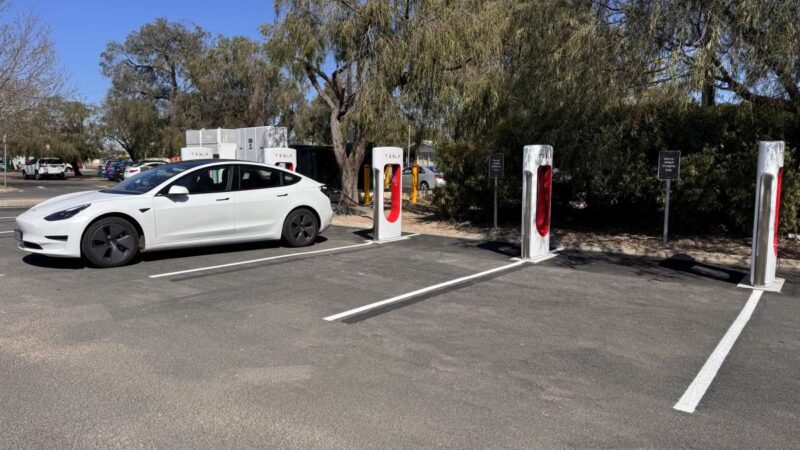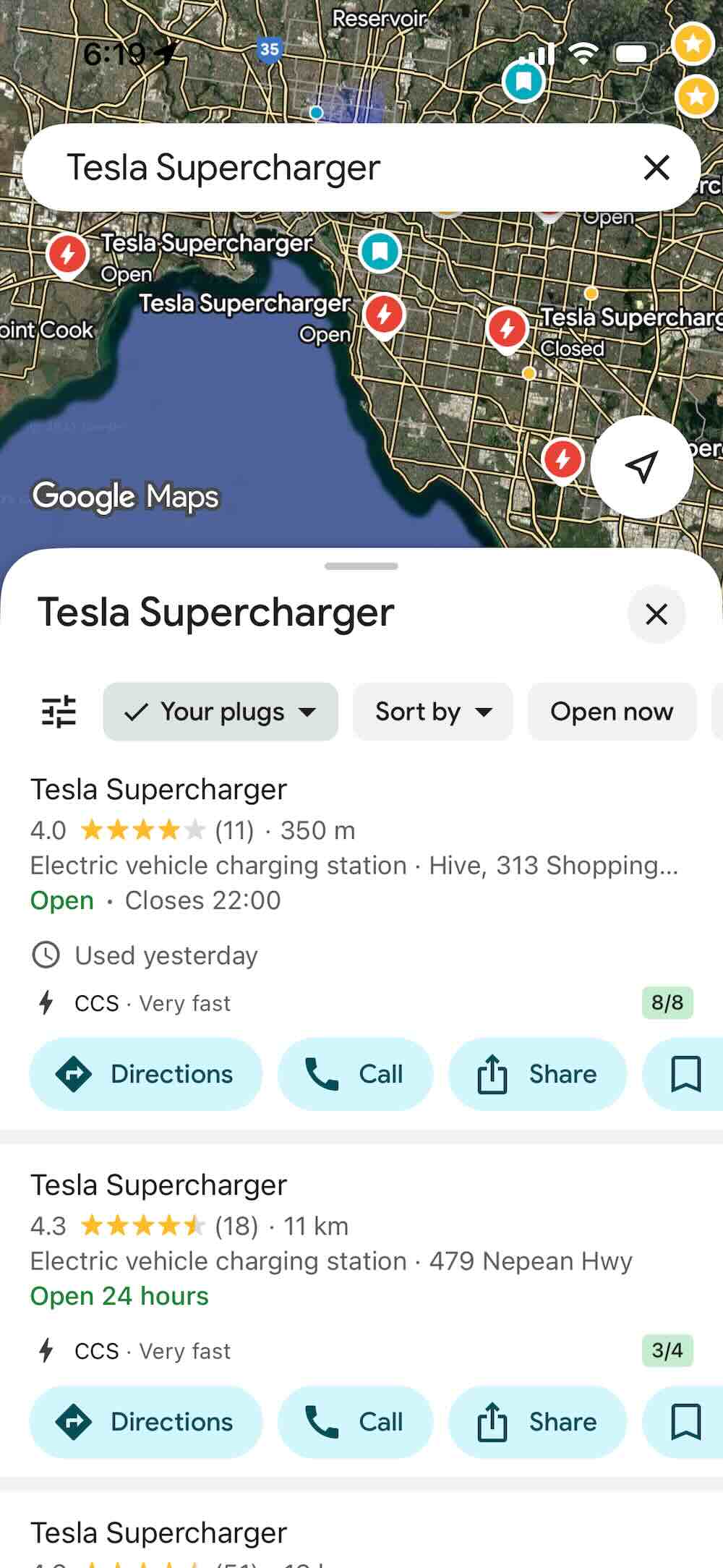In a welcome update, Google Maps now shows the live availability of Tesla Superchargers. Long after Evie Networks, Exploren, Chargefox, BP Pulse, Ampol, and others started making live data available to mapping platforms, Tesla has finally taken the necessary steps to integrate this crucial data with the world’s most popular mapping and navigation platform.
It’s not perfect though. The Google platform does not distinguish between those chargers that are available to non-Tesla vehicles and those that remain locked down to Teslas only.
The best EV navigation—When it works
It’s a very welcome step, not least because Google Maps as implemented in the Polestar and Volvo Android Automotive systems remains the best EV navigation tool that I’ve used by quite some margin. I’m always disappointed that it has not been made available through the mobile app to cover over some of the inadequacies of built-in mapping platforms in some other EVs.
Speaking of other EVs, a quick survey of mapping platforms shows that Here Maps, which is used by many auto OEMs to provide data, does not feature live availability data for Tesla but does for other chargers. PlugShare is the same.
Apple Maps, which has deep CarPlay integrations with Ford and BMW EVs, doesn’t feature live availability data anywhere, for any network. Charge at Large – the somewhat purposeless and unloved Electric Vehicle Council app – doesn’t feature Tesla chargers at all, but then it is also missing chargers from Evie and Chargefox among many others.
Google’s dominance makes this matter
In Australia, a Q3 2024 Sensor Tower survey estimated that 79.9% of Australians use Google Maps for finding things in the physical world and navigating to them. The next biggest platform is Waze, which is owned by Google and relies on Google Maps data. Waze has released some EV-specific features but does not yet display charger availability for any network.
In search, whilst Google’s market share is declining due to the rise of AI tools, Google still commanded 94% in August 2024 of search traffic according to the ACCC. This means that having charger data available, live and correct on these platforms is crucial.
Crucial for EV drivers today, but even more so for people who have not made the transition. People need to be able to find information about EVs and charging in the places that they already look for things.
We are already asking consumers to make a big change by going electric, so asking them to move away from preferred apps and habitual behaviours in other aspects of the driving experience will convince many that an EV just isn’t for them yet.
Visibility—and live visibility of chargers—on the biggest platforms will convince many people that EV charging is available and owning an EV is a practical choice.
Tesla deserves some credit for making this data available, but the only question is: what took them so long?
Ed will be speaking at Everything Electric, part of a panel discussing ‘Next-Gen EVs: What’s Coming Down Under?‘ at 10:30 on Sunday 16th November, hosted by Simone Annan.
Use code THEDRIVEN for 30% off tickets to Everything Electric Melbourne.
The Melbourne EV meetup is on Thursday 13th November at 17:30 at Sanders Place in Richmond – click for tickets.

Ed Lynch-Bell is Principal at Second Mouse, dedicated to building more sustainable energy tech and mobility products, services and businesses. Ed is also a co-host of the Melbourne and Sydney EV Meet-ups, bringing the e-mobility industry together.




